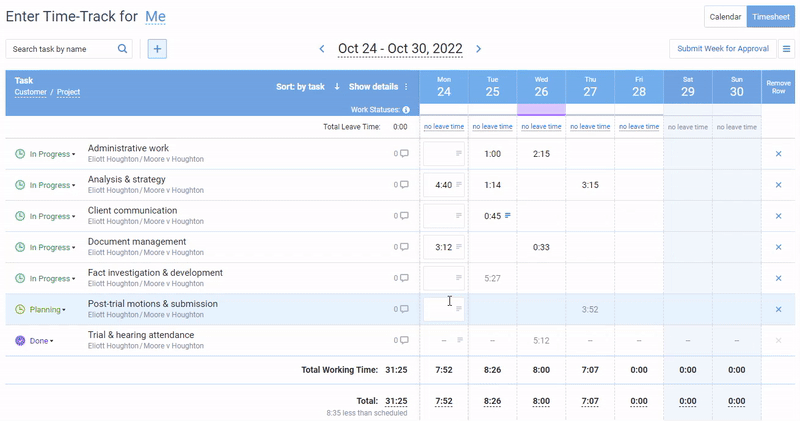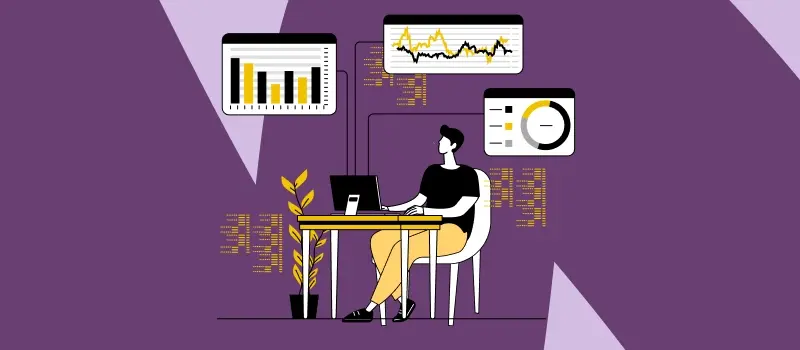
Are you a project manager looking for the tools to run your projects more smoothly? You’ve come to the right place!
This post will provide you with a wealth of free project management templates and an easy-to-follow checklist of steps you need to take at every stage in the project management process. Besides, here you can find some helpful tips and resources that are sure to make the work on your projects a lot easier.
So, let’s get right to business!
Project Initiation
1. Define the strategic context of the project
Clearly articulate the business need for this project, its significance, high-level requirements, and strategic goals.
2. Justify the project in terms of benefits
Calculate the expected return on investment, cost savings, or other benefits that this project will deliver. This information is crucial to secure support from key stakeholders.
3. Figure out which resources you require
Whether it’s skilled personnel, advanced technology, or additional funding, having the right resources at your disposal is essential to project success.
4. Provide ballpark estimates
Roughly estimate your expected project budget, timeline, and other essential resources. These estimates should not be set in stone but rather serve as a preliminary guideline at this point in the project management process.
5. Identify key stakeholders
A project involves many players with different interests and expectations. Identifying key stakeholders and their needs will help you to keep everyone engaged and satisfied later on.
6. Create a project charter
Distill all of the above points into a concise and compelling project charter. This document will articulate the project scope, objectives, deliverables, timelines, resources, and risks. It will serve as a key reference point for all stakeholders and will help to keep everyone on the same page.
7. Get client / sponsor / management approval
It’s essential that you communicate effectively with these stakeholders and ensure that all their concerns and suggestions are taken into account. The key here is collaboration – work together to ensure that you agree on everything and are marching towards the same goal.
Free project management template 👇
This free project charter template makes it easy to define your project scope, goals, and stakeholders, saving substantial time and effort. It will help you ensure that all stakeholders are aligned and have the same expectations regarding the project, which turns project management into smooth sailing.
Project Planning
1. Define project scope and objectives
Having no clear understanding of what the project is meant to accomplish is like driving blindfolded. So, take your time to define the project scope and objectives to avoid any confusion later. Make sure to create a detailed work breakdown structure to take every little piece of work into account.
2. Estimate resources
Truly understanding the scope of the project and all of its components will allow for a more accurate estimation of the money, time, and skills needed for the project. Don’t be afraid to ask questions, use historical data, and dig deep to uncover any potential roadblocks or challenges that may affect your budget and schedule.
3. Develop a budget
Start by gathering all the necessary information, from the cost of materials and equipment to salaries and overhead expenses (and don’t forget to factor in unexpected costs because Murphy’s Law is always lurking in the shadows).
Then, prioritize your expenses. What are the absolute must-haves for your project? What can you live without if things get tight? Consider using the 80/20 rule (aka the Pareto principle) – 80% of your results will come from 20% of your efforts. Focus your budget on the 20% that really matters.
4. Create a project timeline
Time is a valuable commodity, and it’s essential to draft a comprehensive schedule outlining all the project tasks, their start and end dates, their dependencies and deliverables, and the time allocated for each phase. A project timeline will keep you on track and help you meet deadlines with ease.
5. Make a risk management plan
First, identify all potential risks related to budget, timeline, scope, and quality. Then, determine the likelihood of each risk occurring and assess the impact it would have on your project. This will help you prioritize which risks need the most attention and which ones you can mitigate with a contingency plan.
6. Assign roles and responsibilities
Assemble your dream team considering project requirements and tasks at hand. Provide each employee with a clear understanding of what’s expected of them and how their work fits into the larger project.
7. Decide on key performance indicators (KPIs)
What are the key performance indicators that will help you track progress toward your goals? Some common KPIs include conversion rates, customer satisfaction scores, and budget variance.
Keep in mind that your KPIs should be relevant to your goals and provide a clear picture of progress. Don’t try to track too many KPIs at once, as this can lead to confusion and distract from what really matters.
8. Establish communication channels
Establish guidelines and protocols that everyone involved in the project can follow. This may include guidelines for email etiquette, protocols for how to handle conflicts, and guidelines for how to use communication tools, such as chat apps or project management software.
9. Choose your progress monitoring setup
When it comes to progress monitoring tools, there are a lot of different options out there. However, if you need a simple yet effective project tracking solution that can adapt to your workflows and needs, actiTIME is a great choice.
It offers a wide range of features that enable you to monitor project progress with ease and efficiency – from time tracking to project estimation and client billing, actiTIME has got you covered. It lets you create detailed reports that show how much time is spent on each task, giving you valuable insights into how to best utilize your team’s skills and talents.

Free project management templates 👇
This template pack is perfect for anyone looking to start a new project. It includes:
- A project plan template that will foster a thorough understanding of the project’s goals, objectives, and deliverables.
- A work breakdown structure template that will help you break down the project into manageable tasks and assign roles and responsibilities.
- A project timeline template that will give you a clear overview of the project’s timeline, allowing you to identify potential roadblocks and stay on track with your deadlines.
Together, these templates help to keep your project organized and move forward with more confidence.
Project Execution and Control
Daily tasks
1. Hold daily standup meetings
Daily standup meetings, also known as daily scrums, are short and sweet team meetings that occur every day, typically at the beginning of the workday. The goal of these meetings is to provide team members with an opportunity to quickly share updates on their progress, identify any potential roadblocks, and coordinate with one another.
2. Track time spent on work
Time tracking methods available today are plentiful. You can use something as straightforward as a spreadsheet for simple projects and small teams. However, adopting a modern time tracking solution like actiTIME is much more convenient.
Whether you prefer to fill out your weekly timesheets, log hours on the go, or have your online activities tracked 100% automatically via a browser extension, you can do so with actiTIME. On top of that, it lets you set billing rates for tasks and hourly pay rates for employees so you can keep a precise record of your billable time and project costs all in one place.

Weekly / Biweekly tasks
1. Plan workloads for the next sprint
A sprint is a fixed period of time, usually one or two weeks, during which a set of tasks is completed. By breaking the work down into sprints, you can better predict what will be accomplished during each period, and adjust your plans accordingly.
2. Monitor project scope variations
Scope variations refer to any changes to the project’s original plan, timeline, budget, or objectives. It is essential to keep track of them to prevent any surprises later in the project stage and, most importantly, understand the reasons behind them.
A scope change could be due to unforeseen circumstances, inaccurate planning, or stakeholder feedback. Keeping a record of each change and its causes helps in analyzing the impact of the variation and its ripple effect on other project aspects.
3. Review employee timesheets
Project time tracking fosters better budgeting and optimal performance efficiency. By reviewing employee timesheets, you can pinpoint whether your team is struggling with their workloads and address any underlying issues that reduce productivity. This can directly impact the success of a project and could be the difference between meeting or missing a deadline.
4. Arrange sprint review meetings
The sprint review is a meeting held at the end of the sprint, where the team presents their progress, showcasing what they achieved in the previous sprint. This meeting is a fantastic opportunity to get feedback from stakeholders and adjust your backlog accordingly based on their comments.
5. Compare project estimates to actual results
Staying within budget and time constraints is essential to keeping stakeholders and clients happy. Going over budget and missing deadlines is a surefire way to turn any project into a nightmare.
Thus, you need to regularly compare your time and cost estimates to actual results as it allows you to adjust your strategy whenever necessary and ensure that you stay on track, on budget, and on schedule.
6. Update clients on project progress
Weekly updates not only demonstrate your commitment to transparency and accountability, but they also provide an opportunity for your clients to provide feedback, ask questions, and ensure the project is on track.
Monthly tasks
1. Measure resource utilization
Proper analysis of resource utilization allows you to identify any potential bottlenecks, risks, or inefficiencies that can derail a project. It helps to see which resources are being overworked, under-utilized, or in surplus. And with this data in hand, you can reallocate resources in a more efficient way to save time and money.
2. Analyze your KPIs
Look for patterns, trends, and anomalies that may indicate areas of improvement or potential risks. Don’t forget to compare your KPIs against industry benchmarks and past project performance to gain a better understanding of how your project is performing.
3. Keep tabs on risks
If you identify new risks or if old risks change in severity, it’s time to take a step back and reassess their potential impact on the project. Analyze the risk and revise your mitigation plan accordingly. Keep stakeholders informed of the risk escalation and any changes to the project plan – it’s better to over-communicate than to leave anyone in the dark.
4. Get feedback from clients
Client feedback is the ultimate reality check. It allows you to step out of your own headspace and see your project from a different perspective.
Your clients are the end users – they are the ones who will ultimately determine whether or not your project meets their needs. So, getting their feedback on a regular basis ensures that you will deliver what they actually want.
5. Send out invoices
Invoicing becomes a breeze with reliable accounting or time tracking software.
For instance, to create a new invoice in actiTIME, you simply need to track time spent on billable tasks, then select the projects and clients you want to bill, specify the billing period, and voila! The software automatically generates a detailed invoice with all the necessary information, including project name, tasks completed, and billable hours.
The last step is to upload your company’s logo to the invoice, export it to PDF, and send it to clients – how easy is that?
Free project management templates 👇
Here you can find a valuable template pack that includes handy tools for streamlining your project tracking process:
- The project timesheet template allows you to easily track the time spent on each task and maintain an efficient use of resources.
- The project task list template helps to prioritize and organize tasks.
- The Excel task tracker template offers an intuitive way to monitor progress and updates in real time.
- The invoice template makes billing a breeze.
Get them now to boost productivity and stay on top of your projects!
Project Closure
1. Finalize and review project reports
Go through your reports with a fine-toothed comb. Check if every task has been closed out, every deliverable has been completed, and every milestone has been achieved.
2. Ensure all invoices are paid
Timely payments ensure that everyone involved in the project gets compensated fairly and can move on to their next venture without any financial stress or burden. So, make sure you were paid for your hard work, and don’t delay any payments to your suppliers and other third parties you collaborated with.
3. Conduct a post-project review with clients / stakeholders
Such reviews provide a fantastic opportunity to assess the success of the project. You can gain valuable insights into what worked, which stakeholders were satisfied, and which areas could be improved. These insights can then be used to shape future projects, improving your organization’s overall success rate.
4. Record important lessons
Documenting your successes and failures, what obstacles were faced, and how they were overcome, will serve as a valuable reference point for future projects – it will help you enhance your project planning and achieve superior results next time.
5. Celebrate project delivery with your team
When you and your team put in countless hours of hard work, going above and beyond to deliver a quality product on time, it’s vital to take a step back and celebrate the end of the project.
This will create a sense of camaraderie amongst your team members and will show them that their hard work is valued, which can give them a sense of purpose as they move on to their next project.
Useful project management resources 👇
- 20 project management tools and techniques
- A guide on process optimization in project management
- Agile project management explained
- How to improve project management with actiTIME (7 tips)
Comprehensive project management checklist 👇
Managing all aspects of a project effectively is far from easy, which is why we created a detailed checklist to smoothly guide you through each step of the process. It covers everything from setting project goals and timelines to monitoring progress and ensuring successful project closure.
Download our project management checklist today and rest assured that nothing falls through the cracks.

Simplify Project Management with actiTIME
As every project manager knows, success is always the goal. By using a combination of our top-notch project management templates and resources, you can confidently take on even the most complex projects with full results assurance.
Striving for even greater achievements? Then, actiTIME should be your go-to solution.
actiTIME is the ultimate project management tool that simplifies everything you do. It lets you plan out workloads, monitor work progress, bill clients, and analyze performance results. It’s available both on the web and as a mobile app, which means you can access your projects and timesheets from anywhere.
And the best part? It’s incredibly intuitive to use. You don’t need any technical skills to get started – just sign up, create a project, and proceed to track your time.
So, sign up for a free 30-day trial now and get ready to jump ahead of the game.










































